
14 Sep Cognitive Dissonance & Buyer’s Remorse in Marketing
What is Cognitive Dissonance?
According to the American Psychological Association, cognitive dissonance is defined as:
An unpleasant psychological state resulting from inconsistency between two or more elements in a cognitive system (beliefs, actions, attitudes, etc.).
There should be congruency between one’s actions and beliefs. Whenever that fails to happen, cognitive dissonance occurs.
Cognitive dissonance often causes feelings of discomfort, sadness, stress, guilt, regret, etc.
People attempt to relieve this tension in different ways, such as by rejecting, explaining away, or avoiding new information (Cherry, 2022).
Let’s look at an example to understand cognitive dissonance.
Devesh, the newly hired CMO of Wealthsimple (a financial services company), has to decide on the long-term vs. short-term growth of Wealthsimple.
He truly believes that investing in branding via OOH, TV, and other “above the line” acquisition channels helps develop a brand while impacting metrics such as brand recall, brand affinity, brand loyalty & overall reach.
This is very important for the long-term growth and sustainability of a brand.
On the flip side, Devesh is hired on a 3-year contract and is given the task of doubling the customer base.
He knows that such aggressive growth is only possible through performance marketing tactics (paid search, paid social, etc.) as it can give you instant results.
Despite his strong belief that every growing company should invest in upper funnel channels to build brand equity and recognition, he gave into the pressure from the board of directors.
He decided to invest 95% of the marketing budget in performance marketing (paid search, social, etc.) and only 5% towards branding.
Essentially, he did something that was contrary to his beliefs about marketing.
Devesh started feeling stressed at work and he didn’t think that he was doing justice to the role he was hired for.
He felt guilty but justified his actions by telling himself he didn’t have any alternative.
6 months later, when he met other CMOs at the Annual CMO summit, some of his CMO friends asked him a question about Wealthsimple’s marketing strategy:
“Wealtshimple just received funding from Drake & other celebrities. I’m sure you have the money. So, why don’t we see Wealthsimple’s ads on TV & out of home billboards?”
He knew that such a question might come up and he had already thought of a few answers that would help rationalize his actions.
Devesh answered:
“I don’t believe in wasting marketing dollars on tactics such as TV, OOH, radio, etc. because I can reach a similar audience size and accumulate more revenue for a fraction of the cost by advertising on paid channels such as Facebook, Google Search, & TikTok.”
Do you see what happened there?
The incongruence between beliefs and actions made Devesh go through cognitive dissonance.
Someone who smokes also goes through similar feelings and avoids information that shows how harmful cigarettes are. People also try to look for information that helps support their actions and therefore a smoker might read articles such as “Smoking is good for you”.
Here’s a good graphical representation of how cognitive dissonance takes place and what are the 2 possible solutions to the problem (change action or change belief):
Buyer’s Remorse Or Post Purchase Cognitive Dissonance
Recently my imaginary girlfriend bought a Nintendo Switch.
If you wanna read an article that talks about her purchase journey and attribution models, then click here.
Like many, she was obsessed with Mario games (Mario Kart, Mario party, etc.) and wanted to relive her childhood days.
However, it has been a month since she bought the switch and she has barely spent 30 minutes playing it.
Why is this? Well, she thought that she would receive that same level of satisfaction that she did when she was a kid.
Unfortunately, now completing the levels in the Mario games felt more like a chore and not a challenge to her.
After spending $350 on the console and game, it sits beside the TV collecting dust. It did not meet her expectation of “fun” that she used to experience when she was younger and she now regrets the purchase.
She is suffering from “Post-Purchase Cognitive Dissonance”, also called Buyer’s Remorse.
The “Post-Purchase Dissonance” is a form of cognitive dissonance that occurs when someone highly rates a product/service, buys it, and isn’t satisfied with the purchase.
This is also called “Buyer’s Remorse” and can leave many with a feeling of regret and anxiety. The more expensive the product, the higher the chance of experiencing this phenomenon.
Here are the most common items for buyer’s remorse:
Now, Cognitive Dissonance & Buyer’s Remorse might seem very similar (and they are), but there’s also a critical difference between them.
What’s The Difference Between Cognitive Dissonance & Buyer’s Remorse
Buyer’s Remorse is a form of cognitive dissonance that someone experiences post-purchase.
Cognitive dissonance, in itself, is a much broader concept that someone can experience irrespective of whether or not they bought a product/service (such as my friend’s example that I gave earlier).
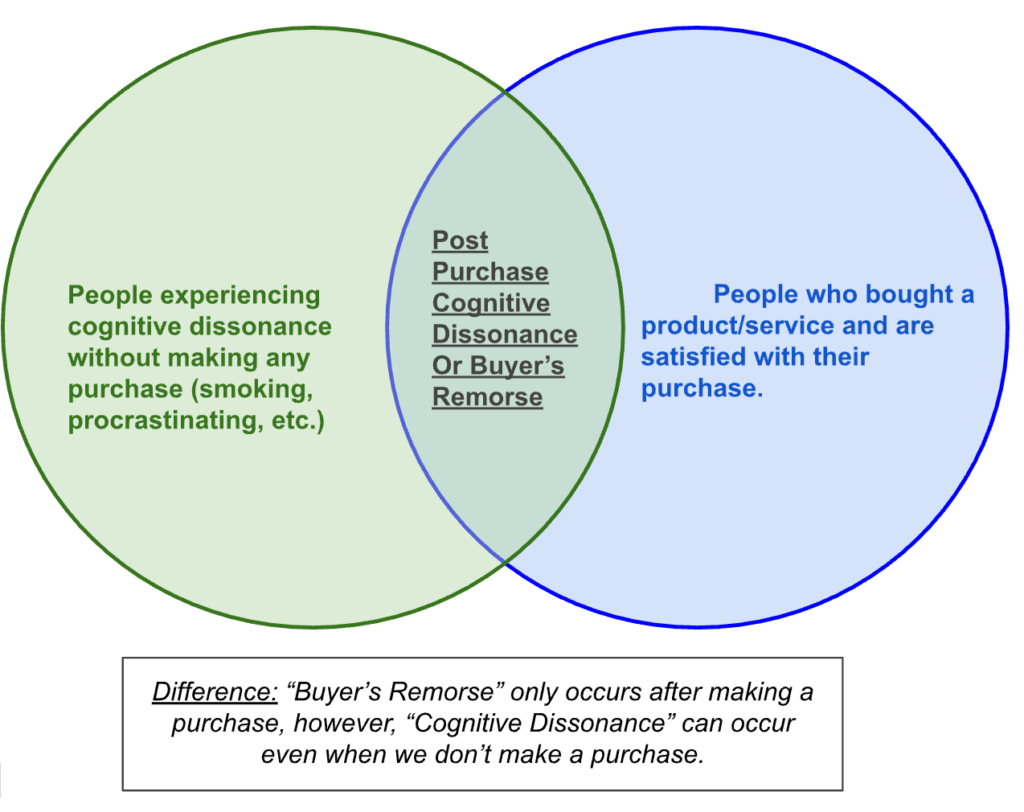
Here’s how to interpret the Venn diagram:
Green circle (A) shows cognitive dissonance
Blue circle (B) shows people who made a purchase.
The intersection between the green & blue circle (𝐴 ∩ 𝐵) shows people who made a purchase and are suffering from cognitive dissonance (Buyer’s remorse)
So, for someone to experience buyer’s remorse, they must first buy a product. Easy, right?
Hope this concept is clear and you never confuse cognitive dissonance and buyer’s remorse.
Moving on from this important distinction; I would now primarily focus on Buyer’s Remorse Or Post Purchase Cognitive Dissonance in this article.
The reason why Buyer’s Remorse exists is that we never really have utopian choices. If we did, then everyone would be happy with their purchase and wouldn’t regret it.
In reality, there’s no perfect product or service, and differentiation and innovation make sure that there are always some differences in the available options.
This leads to the most important part of this blog.
How To Reduce Buyer’s Remorse Or Post Purchase Cognitive Dissonance?
It is widely agreed in the world of marketing that buyer’s remorse is primarily caused by one or more of the following:
- Rushing into a purchase or impulsive buying
- Lack of research
- Buying something that you might not use
- Availability of better alternatives
- Poor financial planning
- The product didn’t meet expectations, etc.
While marketers cannot help with some things like poor financial planning and impulsive buying; they can help with some of the other primary reasons behind buyer’s remorse.
Now, how to reduce it?
Here are a few commonly known methods to reduce buyer’s remorse or post-purchase cognitive dissonance:
- Provide timely responses
- Send a thank you note
- Provide value even before someone makes a purchase (we see this happen a lot in B2B marketing where brands share resources or conduct webinars)
- Know why people are experiencing remorse by conducting research/survey
- Offer discounts
- Make returns easy
Any article that you read on the internet will talk about some of the things I mentioned above. In case you want to read about these, I will attach a few articles that I like at the end of this newsletter.
What’s most interesting to me is tackling the availability of better alternatives and the lack of research.
Lack of research can be remedied by making research easy for your customers. A company should understand and provide all the necessary information a potential customer might need.
Make Research Easy
There are two ways by which you can do this.
1. Compare Different Models/Plans
A lot of companies have closely priced products or are selling different versions of the same products.
A good example will be if you’re looking to buy thermostats.
Let’s say you decided to buy a Sinope Thermostat.
If you don’t have a lot of knowledge about thermostats, then you would be super confused about which model is right for you, especially because all thermostats look the same.
In such a scenario, a simple graphic like this can help you make the right decision.
If you help people buy the right product or choose the right plan, the chances of someone canceling your free trial or returning your products reduce significantly simply because the occurrence of post-purchase cognitive dissonance decreases.
Another good example would be a company from Singapore called Ghost.
Do you see how clearly they have defined their pricing page? More B2B companies need to start doing this.
Plus, extra points for “Everything in Starter”, “Everything in Creator”, etc. because that just makes things more clear.
More on them later.
Since I’m working at Rakuten Kobo, I would love to give them a shout out too.
Let’s say you’re in the market for an eReader, have a budget of $250, and you don’t know which eReader to buy.
To remedy this, Kobo has a fantastic comparison tool that soo many companies don’t have.
You don’t have to go to individual product pages to see which eReader I need to buy. It makes your life easier.
You would think that it’s an obvious thing to have, but trust me, when you’re running a business, everyone always seems to have too much work.
When someone does have free time, things that tend to bring the greatest return in the shortest amount of time seem to get the green light, whereas programs that might not show any significant impact in the short run are deferred. Don’t let product comparisons be one of those things that you keep on the burner.
Car manufacturers suck at this. They either don’t compare different models of the same car or when they do, it looks something like this:
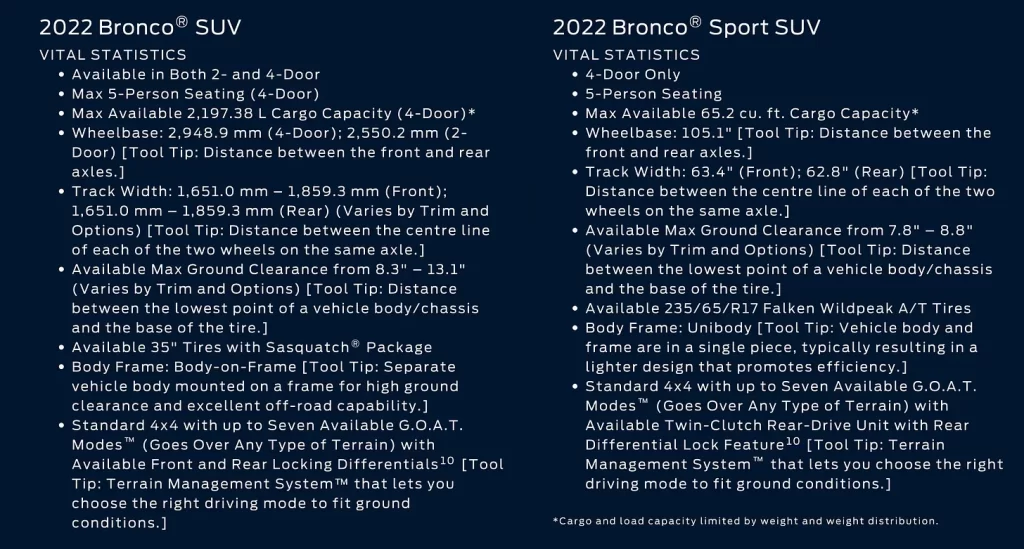
Needless to say, Ford did a bad job at this.
2. Images & Reviews
This is an obvious one. Don’t be shy to use product images.
Amazon’s official product image requirements page suggests that you should:
- Have all kinds of images: lifestyle, product, benefits-rich, feature-rich, etc.
- Show the product in use or in an environment with different angles and different features being visible
- Have at least 6 images and one video for your product.
If you wanna go the extra mile, then companies these days also use AR or a 360-degree view of their products. I’m sure you would have seen something like that by now.
If not, then have a look:
I was amazed when I first tried Adidas’ virtual try-on feature on Amazon. It’s very cool.
Even if you’re not an e-commerce brand, pictures always help reduce dissonance.
I recently went to a Korean restaurant in Montreal called Moa-Moa. I had never tried Korean food before and had no idea what to expect. What helped me? Images.
Their menu only had images of 5-6 products, and I ordered the dish that seemed like something I wouldn’t hate. I enjoyed my Bibimbap and left the restaurant without any remorse.
Do you see? We, by default, look for cues that can help us make the right decision and prevent buyer’s remorse.
As a marketer, it’s our job to make the buying process as easy and stressless as we can.
One such thing that can help facilitate our consumers’ buying process is reviews.
Implementing reviews on your website is a no-brainer in my opinion.
Reviews are reassuring, especially for expensive purchases or for less frequently bought items.
Here’s an example of Sinope (again) that does a good job at this:

The guy above also left a picture. Isn’t that awesome?
Reviews are a great marketing tool. They can be used in paid media too.
Imagine someone who has visited your website 4 times in the last 72 hours and has added the product to the cart but still hasn’t made the purchase.
Rather than showing generic product ads to them, you can use UGC (user-generated content) and show them ads that use the reviews that past customers left. Maybe this will help them make the leap of faith and complete the transaction.
Reviews reassure people that their decision to purchase this product is a good one. As consumers, we love to hear from people who can say “Been there, done that” aka have used the product before.
A reason why Amazon is so successful is that it understood the value of customer reviews. Next time you’re buying an item, just notice how much are you influenced by customer reviews.
You would be surprised.
Availability Of Better Alternatives
“Availability Of Better Alternatives” is essentially an extension of “Compare Different Models/Plans”, however, this topic deserves its section because of how rarely I see it being deployed by companies.
Getting to know that there was a better alternative in the market is probably one of the biggest reasons why people experience buyer’s remorse.
But what if you (or your company) believe that your product is better than others? Or you can prove that you offer considerable differentiation and that’s why your product/service deserves the extra bucks?
Again, imo, writing a blog comparing your product/service vs. competitor makes absolute sense.
A few years ago, when very few people had access to the internet, brands such as Microsoft & BMW successfully used a tactic called “Repositioning The Competition”. It was a great way to create space in highly competitive markets.
These days, companies think they’re taking the high road when it comes to publicly comparing their products to their competitors’ products.
The same companies, however, adopt a different approach when bidding on their competitors’ search terms. Everyone wants to bid on competitor keywords. Where’s the high road now?
I don’t understand the duality.
If you’re a business owner, or you’re a marketer for a company, then ask yourselves these questions:
Do you (or the company you work for) have a better product/service than your competitor or at least you can differentiate (on price, features, quality, etc.) your product/service?
Do you talk about your competitors in business meetings and want to steal market share from them?
Do you bid on your competitor’s brand terms?
If you answered yes to all questions, then what’s the problem in comparing?
What if I tell you that you can also rank #1, organically, for your competitor’s brand term if you do this? That’s potentially thousands of daily organic visitors and hundreds of thousands of dollars in revenue (based on how large your competitor is).
Sounds exciting, right?
Let’s see an example of a company that does this successfully.
When you search for “Substack” on Google, Ghost.org comes on the 1st page of the search results.
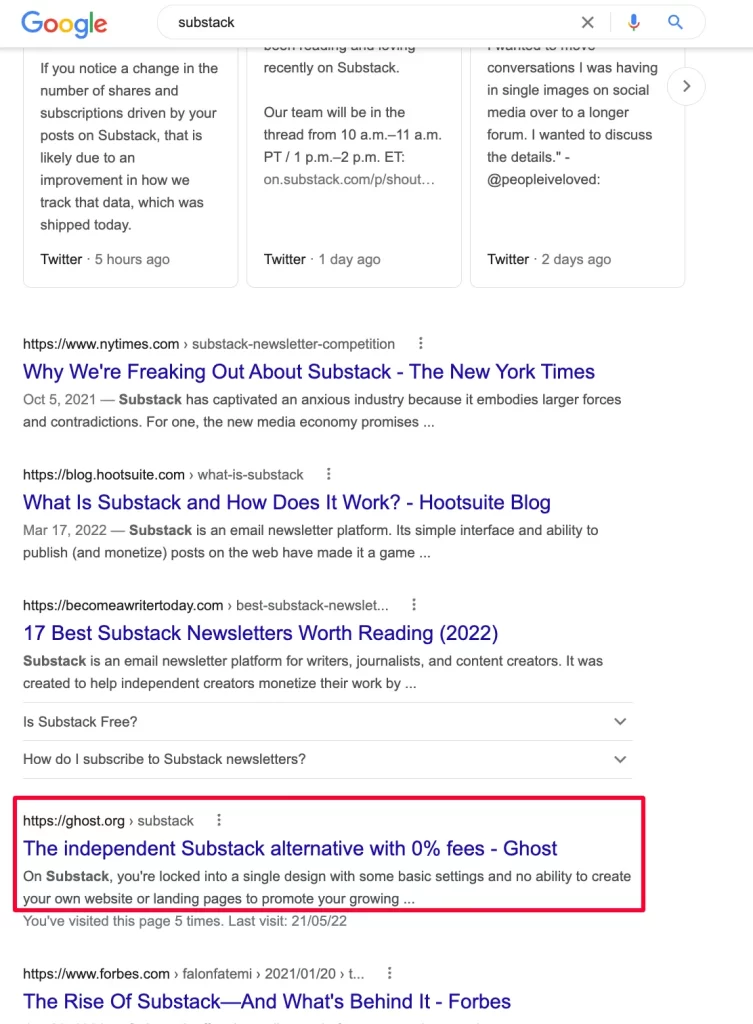
They do an excellent job of comparing their service to their competitors.
They even have a dedicated page for all its alternatives.
Here’s a SS from that page:

Lastly, Ghost.org also has a dedicated page for all its competitors. This is what they use in their search ads too.

Your customers can only become your brand advocates went they know why your brand is better. People need reasons to justify their purchase, and when they do have a solid defense, the probability of post-purchase dissonance goes down.
Happy customers = Low Dissonance = Higher Brand Advocacy
It’s important to let customers know why your brand is better than all the available alternatives in the market.
You can either take the high road or grow a pair 🙂 The choice is yours.
Post-purchase cognitive dissonance is an interesting concept. It is something that we all experience at some stage in our lives. Although we can’t get rid of it (because we all are irrational consumers), we should all be wary of it.
I try to prevent it as much as I can, and even then, I barely succeed.
To minimize it, I rarely make impulse purchases these days. I also budget and plan my expenses months in advance.
I still, occasionally, find myself regretting a purchase: maybe I should have gotten a different flavor of the ice cream, or I should have gotten a more expensive chair with adjustable lumbar support.
Do you see? Buyer’s remorse is a difficult problem to solve for consumers. And for producers? Well, it’s almost impossible. There’s always gonna be someone who regrets the purchase.
Even though there is no “one size fits all” for this problem, hopefully, some of the solutions mentioned above can reduce buyer’s remorse to some degree.
Minimizing what you can’t completely eradicate is sometimes the best solution.
As promised, here are a few good articles/research papers that you can read to understand this concept in more depth:
https://thehustle.co/how-to-avoid-buyers-remorse/
https://www.wonderment.com/blog/what-is-post-purchase-dissonance-examples
https://www.linkedin.com/pulse/combating-post-purchase-cognitive-dissonance-grant-smith/
https://dergipark.org.tr/en/download/article-file/1049956
https://www.simplypsychology.org/cognitive-dissonance.html





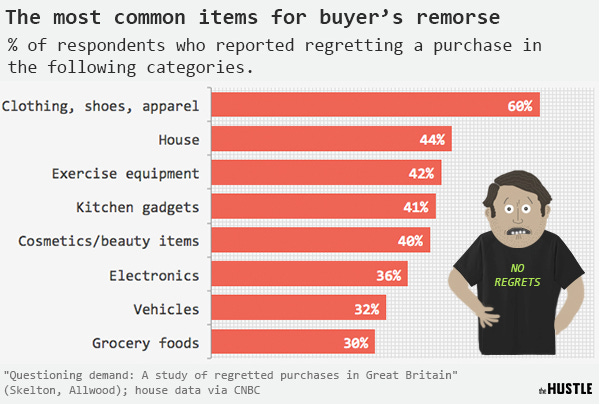
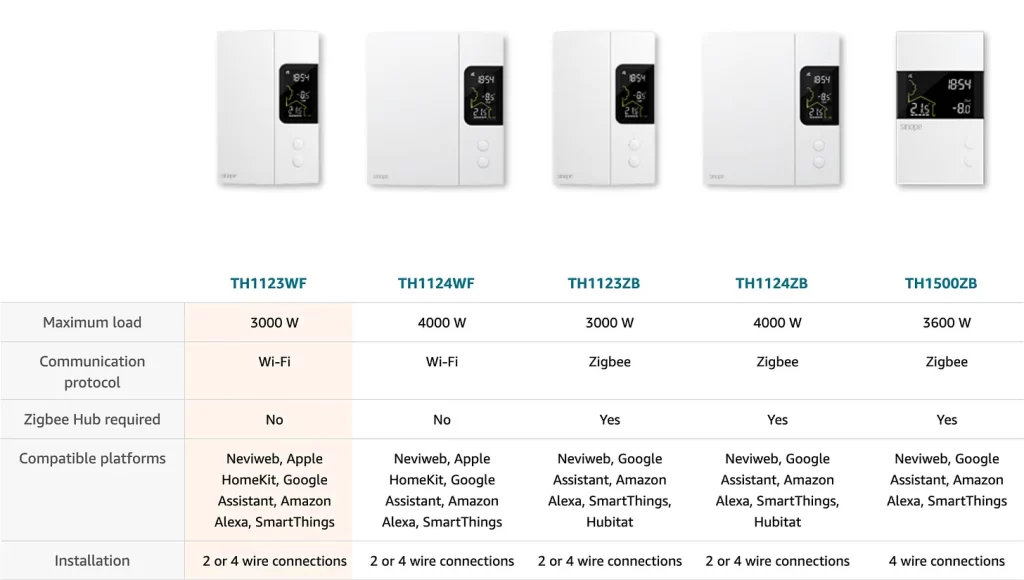


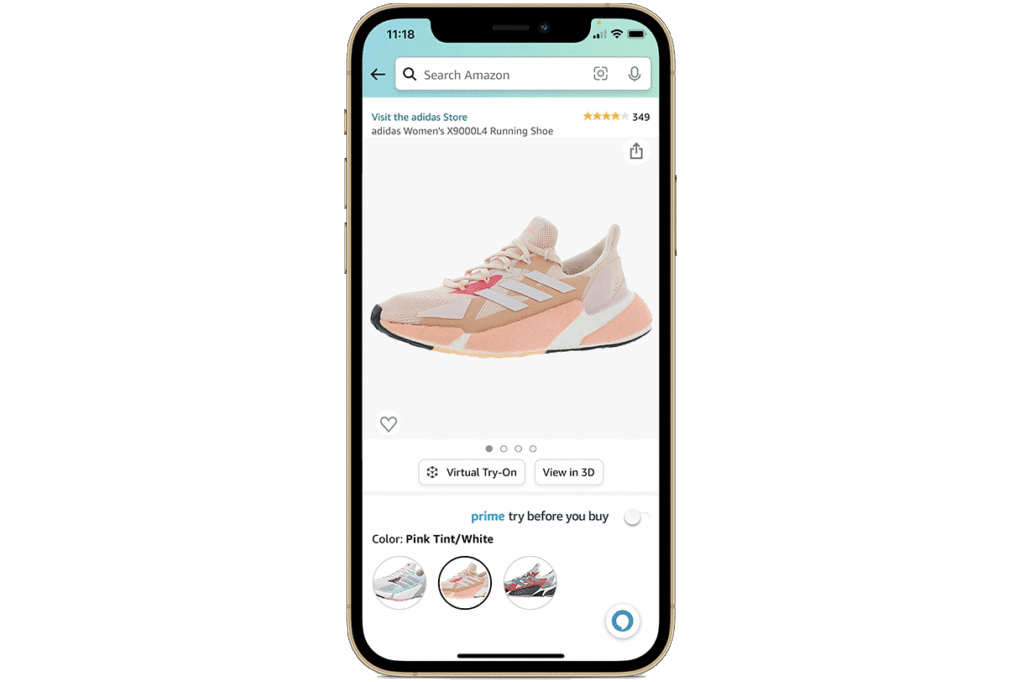
Sorry, the comment form is closed at this time.